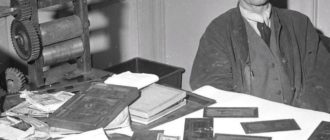
At its core, social realism is a kind of naturalism, but unlike it, it has a pronounced social orientation.
Social realism also should not be equated with socialist realism these are two different directions in the visual arts. Although most of the followers of social realism adhered to left-wing political views, their work was not part of the official ideology, but only reflected the subjective point of view of the author.

History of social realism
Social realism emerged in the middle of the 19th century as part of a global painting movement realism. The famous French painter Gustave Courbet was one of the first to address acute social themes in his work. Many of his works, written in the years 1840-50, had a defiant social orientation and were negatively received by critics.
Similar motives can be traced in some of the works of Jean-François Millet one of the founders of the famous Barbizon school, as well as in the works of British painters Luke Fildes and Hubert von Herkomer.
Adherents of social realism can rightfully be called many Russian Itinerant artists, including the brilliant Ilya Efimovich Repin. A vivid example of his work in this artistic style is the famous painting “Barge Haulers on the Volga”.

In graphic art, the most prominent adherent of acute social themes in art is undoubtedly the German artist Käthe Kollwitz. Most of her etchings and lithographs are devoted to the problems of the beggarly life of workers and have an obvious rebellious focus.
But social realism reached its greatest scope in the United States at the beginning of the twentieth century.
At this time, America was experiencing a period of significant economic recovery, flows of immigrants from Europe poured here en masse. The population of the largest American cities grew at a rapid pace, and with it the number of people belonging to the lowest of society grew.

Supporters of academic American realism in painting tried to ignore the problems existing in the country.
They preferred to portray the quiet life of a wealthy stratum of people whose well-being was gradually improving. But a small group of artists led by Robert Henri decided to challenge the status quo.
They founded the Ashkan School of Painting in New York and chose the inhabitants of the poorest quarters of the city as heroes for their paintings. The depiction of the most unsightly aspects of the life of the metropolis became the main theme of the works of these authors, which caused an extremely negative reaction from critics. Subsequently, this art community received in the press the negative nickname “School of the trash can”, which is firmly entrenched in the vocabulary of the Americans.

During the Great Depression, many social realists, as part of the Federal Arts Project organized by the US government, participated in a cultural program to support the arts. A number of works by masters of painting, created in the period 1935-1943, are today recognized as the most important part of the American cultural heritage.
Social realism began to rapidly lose popularity in the early 40s of the twentieth century, when a new powerful trend arose in American fine art abstract expressionism. After the Second World War, an era of revolutionary cultural changes began, in which there was no place for realistic figurative painting.

Famous artists social realists
Many outstanding masters of painting have left a noticeable mark on the history of realistic art. And yet, the most famous social realist artists are:
- Gustave Courbet (1819-1877) was a world famous French master, many of whose works were received with hostility by critics and the public. His brilliant work did not leave anyone indifferent, and among the artist’s enemies there were many influential people of his time.
- Jean-Francois Millet (1814-1875) the author of deeply dramatic works on the theme of the plight of the French peasants. Millet called himself a peasant and lived a significant part of his life in the countryside.
- Ilya Repin (1844-1930) one of the greatest Russian painters of all time. A recognized master of portrait and historical genres, Repin also left to descendants many realistic paintings dedicated to the life of the common people.
- Robert Henry (1865-1929) the ideological inspirer and creator of the American “Bin School”. Henry led the National Academy of Design’s anti-conservative protest movement and gained recognition during his lifetime. Social realism today remains an important part of the history of the visual arts and the world’s artistic heritage.
This trend does not have as many supporters now as it was 100 years ago, but they undoubtedly exist among a huge number of modern painters.


















